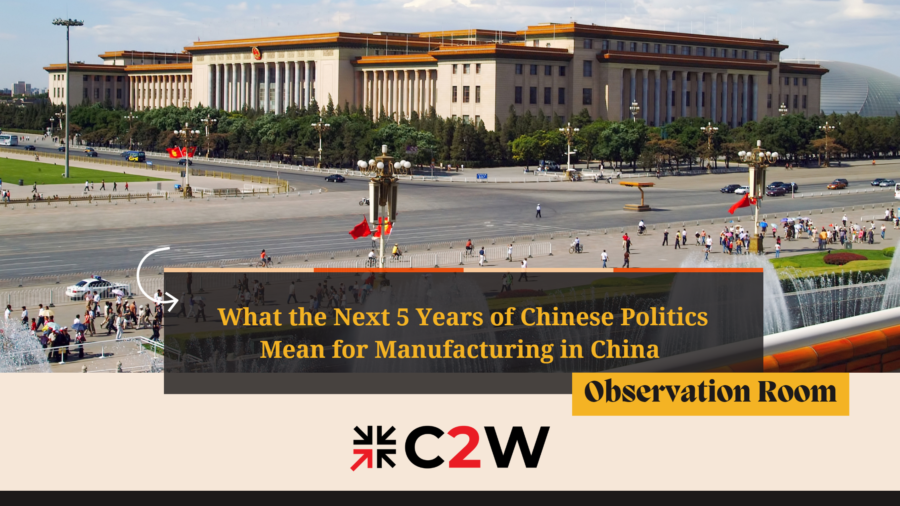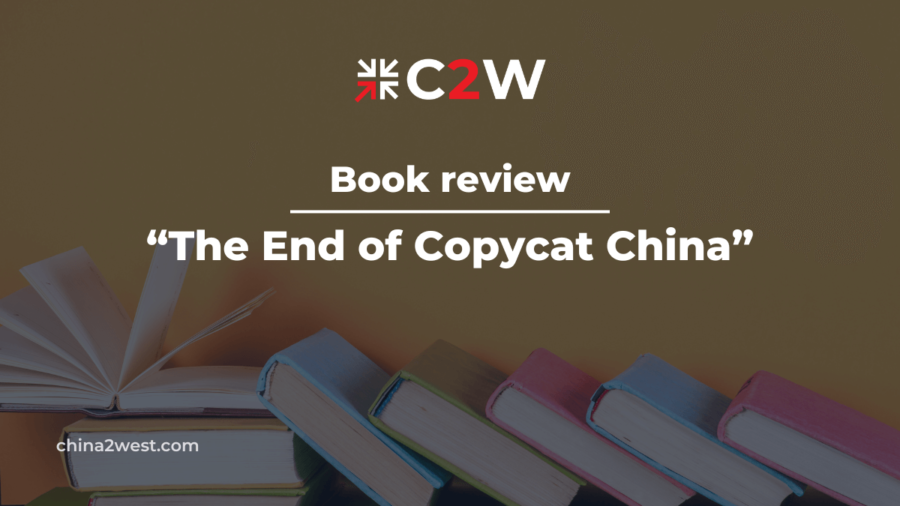Just as widely expected, the Chinese President has just secured his 3rd term of leadership as well as the new line-up, packed with his loyalists, of the ruling elites, a controversial break from his party’s norm, concluding the twice-in-a-decade meeting of the Party’s Congress, despite the dramatic exit of his predecessor the day before.
So was cemented the Chinese political landscape for the next five years, strongly willed by the party leader’s ideology.
Although it wasn’t until the end of the meeting that his leadership was reaffirmed, his opening speech on the first day laid out his outlook for what might be ahead for China, ranging from Zero COVID Policy to Taiwan.
No doubt this has fed even more into the unprecedented level of uncertainty the world is currently facing. Many of those with business ties to China, especially from the west, have already sketched out a strategic game plan amid the looming shadow of the new Cold War.
But first of all, it’s important to know what to expect from the unexpected.
Zero-COVID Policy Is Here To Stay Indefinitely
Ever since Omicron ravaged from province to province, China’s zero-tolerance for COVID has proved to be more challenging than ever. The mounting damage it has done to the economy, including a 60-day lockdown in Shanghai, severely disrupting global supply chains, has prompted fierce debate of this approach, even within the party.
Then it came the determining moment where he reasserted the policy in the speech, defying expectation that it might retreat after the event.
As much as stringent COVID restrictions have been crushing the service sector, much to your surprise, the manufacturing sector has been somehow shielded from the devastating impacts. Many production or assembly facilities, especially those located in major manufacturing hubs, were placed under the so-called closed-loop management during lockdown, which requires workers to be isolated by living in their factory’ premises.
Chinese economics has long been reliant on export for growth, due to lagging domestic consumption. The trade surplus, which is merely the rare, good news left about the Chinese economy, seemingly has reduced the risk of insufficient staffing in manufacturing, which is an issue commonly seen in other economies since the pandemic.
Despite sacrificing millions of jobs in the service sector, it indeed plays its primary role in saving Chinese economy.
For those that manufacture products in China, you can still count on stable industrial output in the World’s Factory. With their power fortress more consolidated than ever, the Chinese government can go great lengths to maintain productivity so as to drive economic growth.
But it is still a double-edged sword. Lockdown may not severely hinder manufacturing activities, but it still manages to have your goods ‘kept at bay’. The Shanghai lockdown aforementioned took great toll on global supply chain for owning the world’s busiest port. Going great lengths means such fiasco is still likely to happen somewhere in the future.
But some still remain optimistic, while total retreat seems impossible, that a certain level of relaxation is still hopeful.
Still A Rough Patch for US-China Relations
Right before the meeting, Washington introduced so far the most aggressive measures to counter Chinese growing clout in chips, even including prohibiting US citizens from engaging in the Chinese semiconductor development.
It is noteworthy that many C-suite executives are US citizens or green card holders, so the move here is apparently intended to choke Chinese brain power in chip-making. But it has still caught Americans in hi-tech off guard, especially for Chinese Americans. “Picking a side’ is the scenario they have been long dreading.
This is also a relentless nightmare for many multinationals or companies with any business association with China. Maintaining this association is an act of walking on eggshells with pressures being piled on from both sides.
Also the timing of this move is tricky. It is not only geopolitical, but also domestic.
The midterm is only a month away, and candidates are ramping up all efforts. China threat has always been one of the issues with bipartisan consensus.
In battleground states like Ohio, one of the Rust Belt representatives, the resentment of losing manufacturing industries to China is weaponized as a campaign, despite outcry from the Asian American community there for fear of triggering even more anti-Asian hate when it already has been rampant since COVID.
Meanwhile, China shows no sign of backing down. Mr. Xi’s speech didn’t name names, but all clues pointed toward the United States, as he referred to China’s successes in “fending off Western bullying and protectionism” and warned about a future with “major tests of high winds and waves, and even perilous, stormy seas.” hinting at a rocky road ahead for China’s rising with western interference.
His tough stance against the western world and nationalistic sentiment in Chinese public flared up by a series of geopolitical events have pretty much dashed hopes for a softer China, let alone his vision for China directly set on restoring its historic glory as a global leader, especially in advanced technology to be completely freed, according to him, from the western chokehold.
For the US, there’s no way back either, with so many partisan and geopolitical interests at stake.
The rivalry is going to last and intensify the foreseeable future, but given their reliance on one another, both countries still try to avoid rhetoric that leads to a complete standoff. But one can safely assume that more punitive and escalating policies that counteract mutually will happen, including tariffs, which the Biden administration contemplated lifting to tame inflation but still end up holding.
In light of such unpredictable dynamics, many businesses gradually shift or diversify their supply chain into different parts of the world. Southeast Asia is the most popular option, but it will still take a while to measure up. If you have manufacturing partners in China, maybe it is about time that you sorted out and re-evaluated your supply chain. Manufacturing companies with operations outside China, especially Southeast Asia have resources and solutions you might need in lowering supply chain risks.
Taiwan Is Still A Big Risk
One of the biggest variables of the US-China relations is still the self-governing island, whose sovereignty Beijing has never budged on.
The entire congress erupted into the first round of applause at the notion of Taiwan. While the president still promises utmost efforts in peaceful reunification with the mainland, he pledges to never rule out forceful military takeover for the worst-case scenario.
When the Russian-Ukraine War first broke out, the international society saw it as a “case study” for the Taiwan issue. The war has dragged on to this day, and the global sanctions against Russia initiated by the United States still persist. Even the EU has been leveraged, and nobody wins apparently.
Ever since Pelosi’ visit to Taiwan, Beijing has been escalating military actions. Many speculate that Taiwan is on the very top of Mr. Xi’s agenda.
With that said, another war resembling Russia and Ukraine is quite likely to happen in the next five years.
But international response may differ though. The economic scale of China is way more massive than the Russian, which means the economic ties with China are way too complicated and vast for many countries to cut off.
But still this is a sign you should watch for
As much as our world is on track of deglobalization, China is still one of the major beneficiaries of opening up to the world. Its economic nature is too outward to walk back on. With that in mind, it still has its perks to manufacture in China. But also given the current climate, it is absolutely wise to plan ahead. Restructuring your supply chain may be one of the ways.
Contact us if you need further information. Our 17 years of experience and resources in Asia are more than capable of providing you with a more optimized and seamless supply chain.


